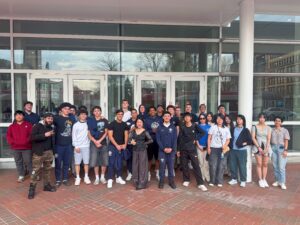
One of the biggest challenges of attending a new school is the overwhelming fear of being unable to find your place. This rings especially true if a student is attending boarding school with other residents they do not know well. However, a wide variety of extracurricular activities gives students a chance to leap out of their comfort zone while also providing personal benefits to their emotional well-being.
An analysis done by the National Center for Education Statistics states the following,“Extracurricular activities provide a channel for reinforcing the lessons learned in the classroom, offering students the opportunity to apply academic skills in a real-world context, and are thus considered part of a well-rounded education. Recent research suggests that participation in extracurricular activities may increase students’ sense of engagement or attachment to their school, and thereby decrease the likelihood of school failure and dropping out (Lamborn et al, 1992; Finn, 1993). If, indeed, participation in extracurricular activities can lead to success in school, then the availability of these activities to students of all backgrounds becomes an important equity issue.” (O’Brien & Rollefson, 1995)
SCA offers various extracurricular activities to choose from for each type of student. While Sports is a major part of the campus environment, artist clubs alongside academic organizations make sure to welcome students who might not be into sports. This creates a more diverse and inclusive student life where students are free to explore their own passions. In addition, community service organizations offer chances to give back to the community with the gifts you share. When a student’s well-being is uplifted by their communities and extracurricular activities, their academic growth is positively impacted as well.
Within any school environment, the students’ well-being is one of the core fundamental aspects in building and nurturing an inclusive, supporting, and enriching educational experience. This is why extracurricular activities are a cornerstone of a welcoming student atmosphere.
Sources:
O’Brien, E., & Rollefson, M. (1995). Extracurricular Participation and Student Engagement. National Center for Education Statistics. https://nces.ed.gov/pubs95/web/95741.asp





